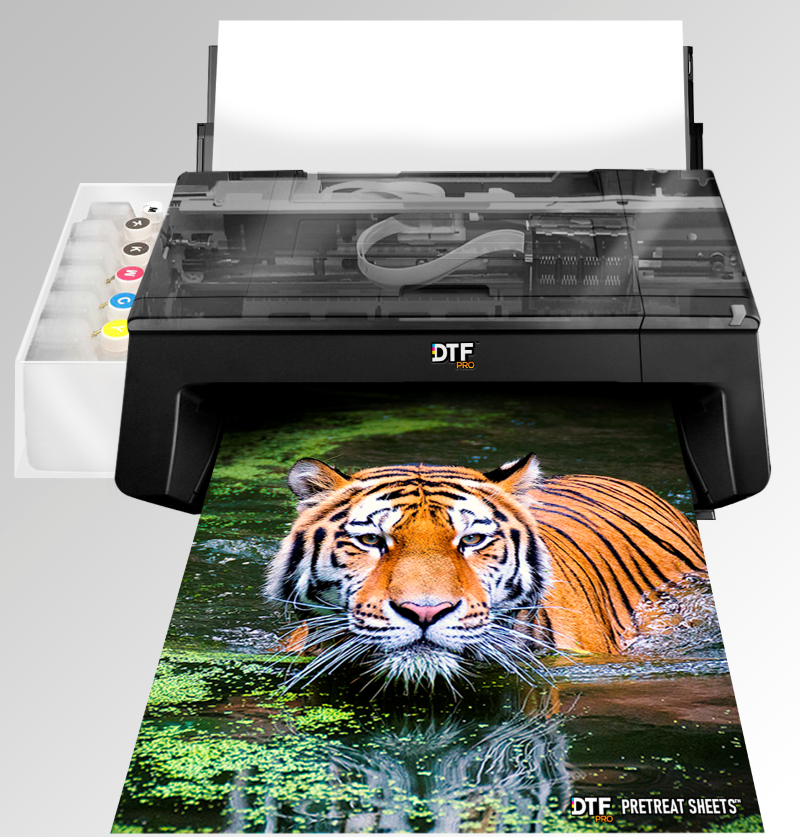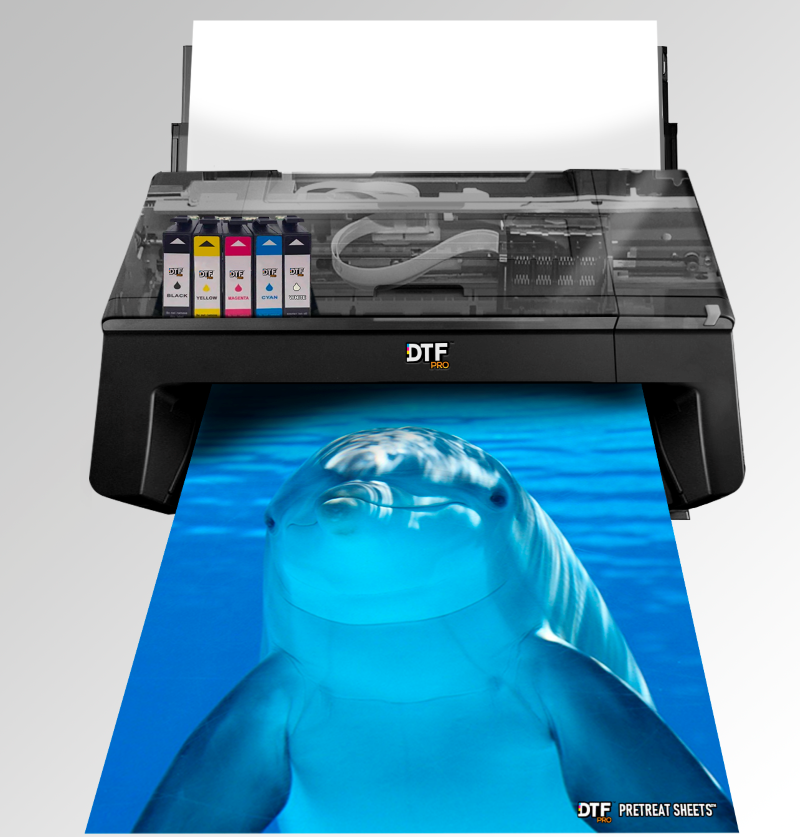WARNING: WARNING: WORK IN A WELL VENTILATED AREA and use Protective Equipment (including masks and gloves) when working with specialty printing and curing products and processes (including DTF, DTG, UV etc.) as fumes and processes may be hazardous. We highly recommend the use of a fume extractor when working with DTF powder in addition to good ventilation and filtration in your work area. The use of all specialty ink printing equipment and supplies such as inks, chemicals, powders etc. are at the sole risk of the user. Specialty inks and film require a good humidity and temperature environment (55% - 75% humidity, and 75° to 80°F) to minimize risk of ink clogs and film buckling.
Popular Questions
Also, on your matte finish film, does that help with the slick feel of the DTF? Would love to figure out how to not have a slick feel on DTF?
Thanks,
Daniel See more »
Also, Our DTF MagicSeal (see link below) helps as well as it has a special coating that locks the transfer into the fibers of your shirt… See full answer »
Ensure your fabric surface is thoroughly cleaned and dried before application, and adhere to the manufacturer's guidelines for temperature and pressure settings for the heat press transfer stage. Insufficient (or too much) heat or pressure during the heat press process may prevent the design from adhering properly during transfer. Additionally, ensure even pressure distribution and precise timing to guarantee optimal results on any fabric type. Optimal…
See full answer »For custom printed transfers (that you don't print yourself, but that you order and arrive ready to press), the powder is already cured, so you can either use them as soon as you receive them,or store them for many months. See full answer »














